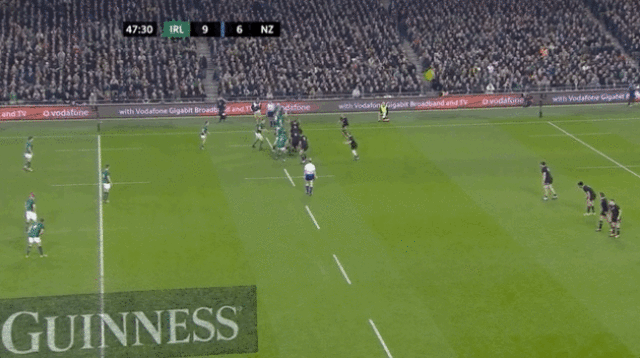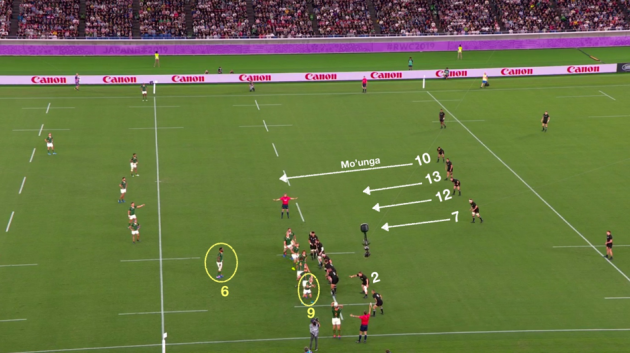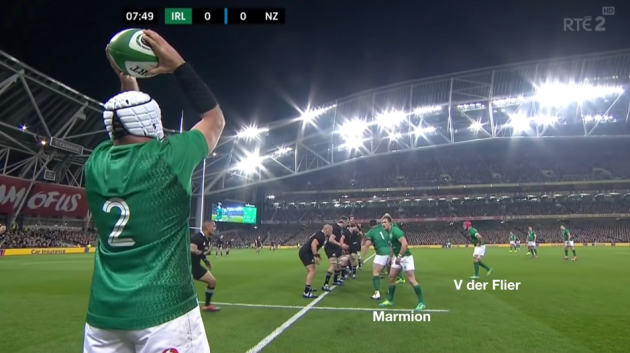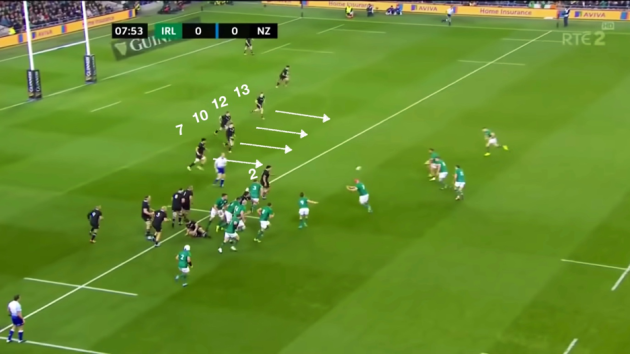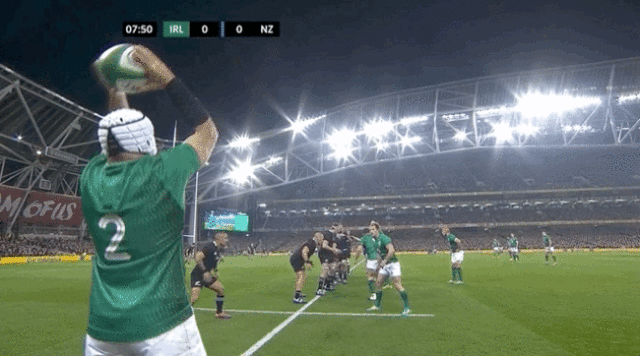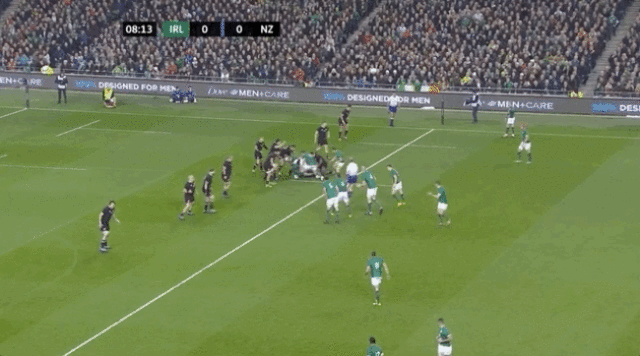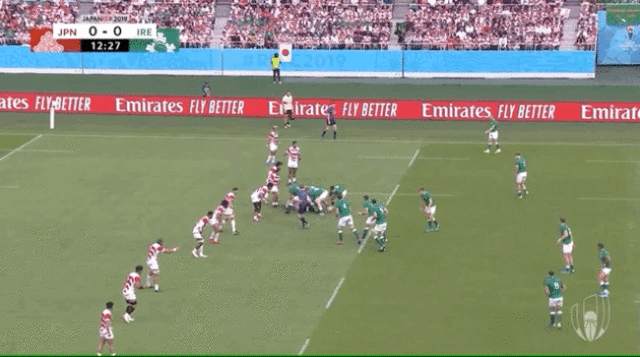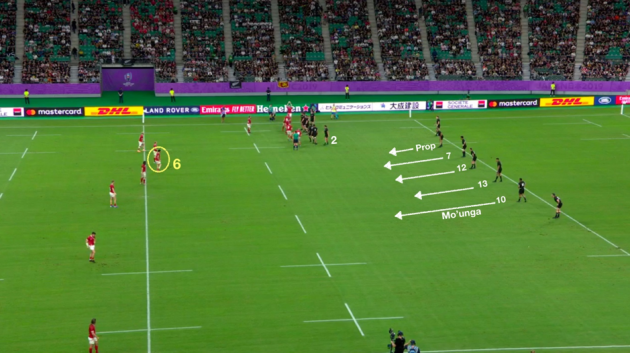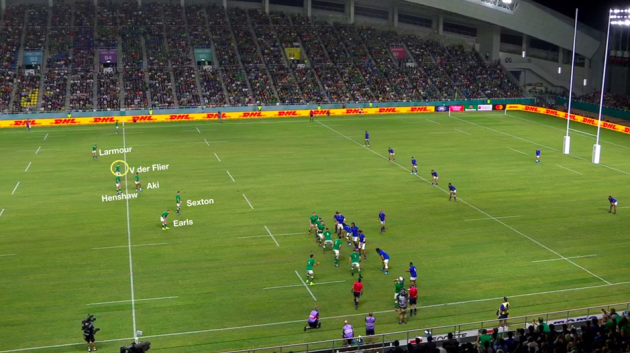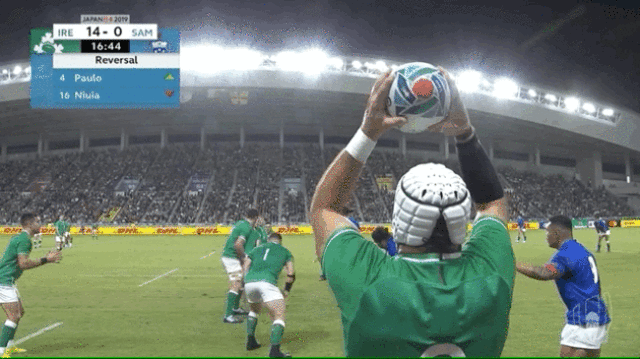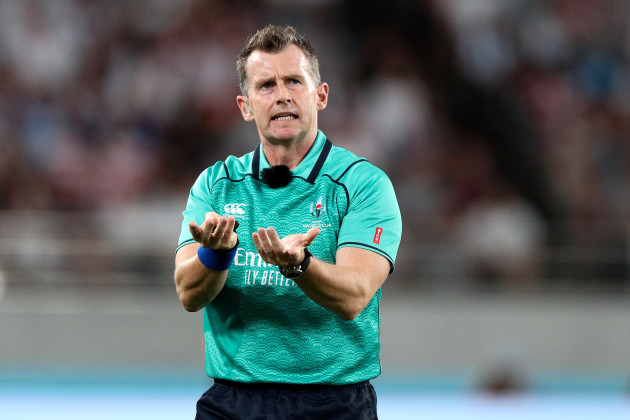GETTING THE PROVERBIAL monkey off the back of Irish rugby is something that Joe Schmidt has excelled at during his tenure as head coach of Ireland.
When beating New Zealand for the first time in Ireland’s history on that glorious day in Chicago, a weight was lifted from the nation’s shoulders and 111 years of heartache was brought to an end. A second victory would follow two years later, confirming the psychological barrier had been well and truly smashed through.
Back-to-back Six Nations titles, a Test series win in Australia and a number one world ranking are other impressive milestones on Schmidt’s watch.
One giant monkey remains, however: winning a quarter-final at a Rugby World Cup.
Ireland have failed on all previous six attempts and on Saturday night in Tokyo Stadium, Schmidt and his team will attempt to cast aside the shadow which has lingered since 1987.
The statistics suggest that it will likely take Ireland’s best performance of the Schmidt era to beat the All Blacks and reach a first semi-final.
New Zealand have won their last 17 World Cup games. Their 18-20 loss to France in the 2007 quarter-final is remarkably the last time they tasted defeat in the competition.
New Zealand’s potent attack is highlighted by the fact they are ranked first in the tournament for linebreaks and metres made. As discussed in last week’s article, they are also the most prolific offloading team in the tournament.
However, they are not the dominant force of the 2015 edition. Following the international retirements of once-in-a-generation players such as Richie McCaw and Dan Carter, the All Blacks have offered glimpses of hope to the rest of the world, whether it be defeats to South Africa, Australia or the Lions in this World Cup cycle.
Ireland have also beaten them twice during this period which suggests that an Irish win on Saturday is well within the realms of possibility if performance levels are optimal.
Defence
Crucially, Andy Farrell’s defence has been excellent in this World Cup. Ireland have only conceded two tries to date, have the best tackle success of any team at 90% and have averaged the fewest linebreaks conceded per game (3).
In the 16-9 win in Dublin last year, Ireland kept New Zealand to single figures and tryless for the first time in a Test match for 20 years and their defence was clearly a key component to the win.
Intriguingly, Farrell’s defence also kept the All Blacks tryless in the second Lions Test in 2017. In short, Farrell has been the opposition defence coach for the only two games in five years in which New Zealand have failed to score a try.
Indeed, the hard press out-to-in defence which both Ireland and South Africa employ, and have enjoyed success with against New Zealand, has been the catalyst to a change in selection policy by Steve Hanson.
The Richie Mo’unga-Beauden Barrett 10-15 selection is based on having two playmakers on the field to give New Zealand run/pass/kick options at first and second receiver to exploit the space afforded to them in the wider channels. This variation makes it difficult for the defensive wingers and fullbacks to anticipate attacking actions as both Mo’unga and Barrett pose that triple threat in addition to top-end speed.
If performed accurately, then width in attack, ball movement and attacking kicks can blunt the linespeed of defensive systems such as Farrell’s and Jacques Nienaber’s.
Attack
Jacob Stockdale’s match-winning try against New Zealand in 2018 was a typically well-conceived and executed Joe Schmidt powerplay to manipulate and exploit the All Blacks’ defensive system.
[Click here if you cannot view the clip above]
Schmidt will have spent a huge amount of time analysing New Zealand’s structured defence for this game. There will be variations to a sample set of launches he has delivered over his coaching career to exploit the All Blacks defence.
I’m intrigued as to how Ireland will go about attacking Mo’unga, who New Zealand defend in the outside centre position off lineouts.
This is traditionally the hardest place to defend as there are normally a multitude of decisions to be made for the tackler. However, Mo’unga, as he did in Super Rugby, shoots off the line to defend his channel and backs his speed to shut down anything that enters his space. It is potentially a high-risk strategy if the correct play is executed as it leaves his open winger hugely vulnerable.
Seven-man Lineout attack: 9 at the front, 6 at halfback
New Zealand’s defensive set-up remains consistent whether the opposition have a traditional seven-man lineout with a scrum-half at halfback or like the image below, where South Africa’s Faf de Klerk [9] stands at the front of the lineout and a forward [Siya Kolisi, 6, in this case] sets up in the halfback position.
As we can see above, the All Blacks defend with their openside flanker [7] at ‘first hands’ and then move fly-half Mo’unga [10] to the outside centre position with both centres moving inside him.
The first two channels closest to the lineout generally have the highest density in terms of ball carries as teams look to win the gainline by targeting the opposition fly-half. In moving Mo’unga wider, New Zealand are protecting the diminutive playmaker from the physical battle but also relying on his footspeed to shut down any wide attacking launches teams may use.
Whilst traditionally used as a mauling set-up, the Springboks run a nice variation here with de Klerk pivoting to his usual position as the ball is delivered and Kolisi drifting outside the 15-metre channel to sit down the tail of the lineout defence.
[Click here if you cannot view the clip above]
However, whilst it is a creative play by nature and traditionally would be the correct launch to isolate the opposition fly-half, that is not the case with New Zealand’s system.
The result is Damian de Allende running at probably the All Black’s best defensive back in Ryan Crotty who makes an efficient tackle.
South Africa got the same defensive picture in the Rugby Championship so the match-up should not have come as a surprise.
On a more technical note, by Crotty making the initial tackle, it allows him to reload to the near side on second phase, which splits the centres both sides of the breakdown for the next phase.
Generally, the 12 or 13 would have to run in behind the defensive line after second phase to ensure the centre split. This is far more efficient and means the defence doesn’t lose a number from the frontline.
Below, we see Ireland go with the same lineout set-up at the Aviva Stadium last year and run a similar play to South Africa.
Kieran Marmion is at the front of the lineout, with Josh van der Flier in the halfback position.
Crucially, unlike South Africa, Ireland’s play is designed to isolate Beauden Barrett [10 below] on first phase, who was defending in the traditional fly-half position last year.
Whilst Barrett does reasonably well to deal with the Robbie Henshaw carry, as we can see in the clip below, he is assisted by Crotty which means New Zealand lose their 10 and 12 to the initial tackle.
[Click here if you cannot view the clip above]
Bearing in mind New Zealand’s new defensive system, then the variation to this play could be the link pass from Henshaw behind Garry Ringrose to Johnny Sexton with Jacob Stockdale on his outside hip.
This would be an ideal way to isolate Mo’unga and test his decision-making ability and connection with his open winger.
Interestingly, going back to the above launch Ireland ran last year, it is a sophisticated five-phase power play which results in the Ringrose sneak down the short side off Marmion’s switch pass, as we see below.
[Click here if you cannot view the clip above]
Ireland ran a very similar sequence successfully against Japan in the pool stage of this World Cup, with Ringrose making the initial break before finding Earls, as we see below.
This break led to Ringrose’s try from a Jack Carty kick.
[Click here if you cannot view the clip above]
If Ireland don’t target Mo’unga on first phase, then it may be a similarly innovative sequence play that gets to him later in the sequence.
Six-man Lineout: 9 at halfback
If the opposition run a traditional six-man lineout with a forward in midfield then New Zealand will drop their loosehead prop to defend inside the openside flanker at ‘first hands’. Their remaining defensive structure stays the same with Mo’unga in the outside centre position.
Whilst the All Blacks have an additional number in their defensive line, it does not necessarily provide them with that much more width given it is a prop, as he would struggle to remain on Ardie Savea’s hunt [i.e tracking inside Savea] as the play unfolded.
We get an example of the All Blacks’ defensive set-up below.
Interestingly, Ireland ran a number of six-man lineouts against Samoa last weekend, utilising van der Flier in midfield, as we see below.
We can see this particular play unfold in the clip below.
[Click here if you cannot view the clip above]
There is a lot of variation available to this play, with a return pass to Sexton or Henshaw again a very real possibility to target Mo’unga.
The fact Samoa did not drop an extra forward into the backline like the All Blacks have done is of course relevant, however if the launch was run from a little deeper in Ireland’s half then the open winger would have to be a little more offset to cover backfield and again potentially leave Mo’unga vulnerable.
It will be fascinating to see how Ireland go about attacking New Zealand off lineout and how they try to manufacture one-on-one match-ups with Mo’unga.
Kicking
Another key element to Ireland’s success over New Zealand last November was their kicking game. Despite the absence of the injured Conor Murray, Ireland went to a high-volume (29) kicking game with a particular emphasis on contestability.
Even if New Zealand won back possession, either Barrett or Damian McKenzie would invariably be at the bottom of the breakdown taking away both their attacking threats and energy reserves. Kieran Marmion deputised exceptionally well at scrum-half with both his box-kicking and defensive game, while Sexton was accurate when going to the bomb.
The All Blacks’ wingers for Saturday’s quarter-final are the two least experienced players in their matchday squad, combining for just 12 of the 1,075 caps.
In George Bridge and Sevu Reece, New Zealand have genuine attacking threats on the edges, however it seems certain that Ireland will apply aerial pressure with a suffocating kick-chase to both wingers and fullback Barrett.
South Africa, the Lions and Ireland have all demonstrated that an accurate contestable kicking game against New Zealand can pay dividends and, crucially, dictate the tempo of the game.
Discipline
Discipline has been integral to Ireland’s success during the Joe Schmidt era. Opposition teams find it exceptionally difficult to find entry points into the game or win the territorial battle due to Ireland’s low penalty count.
Ireland’s discipline during the World Cup has been typically good – apart from the Japan defeat (9 penalties conceded) – averaging only 6.8 penalties per game which is the third-lowest in the competition.
Intriguingly, New Zealand have, on average, given up the second-lowest number of penalties at 6.3 per game.
The penalty count had a significant influence on the game in Dublin last November, with the All Blacks conceding over double (11) that of Ireland (5) when Wayne Barnes was in charge as referee.
Nigel Owens has been appointed the referee for Saturday. He has made some big calls in this fixture – a scrum penalty against a dominant Ireland pack in the second Test in Christchurch in 2012 and the painful breakdown infringement with seconds to go in 2013, one that still hurts this writer.
Ireland’s record with Owens in charge is Played 19, Won 10, whilst New Zealand have an 87% win record from the 22 games he has refereed, which is in line with their overall win percentage over this period.
Ireland certainly have the capacity and the capability to win this quarter-final and create another piece of history. This team’s Everest is no longer the All Blacks.


